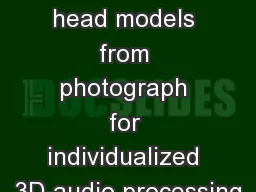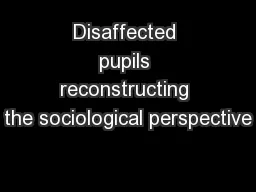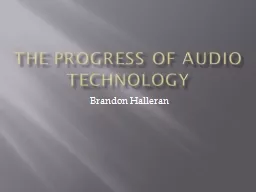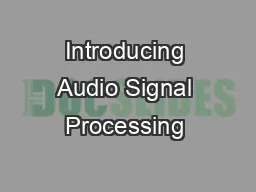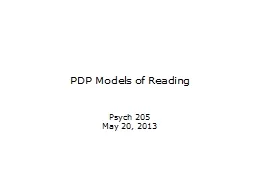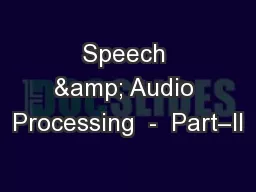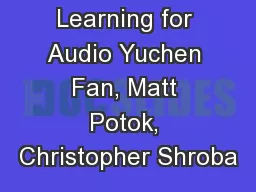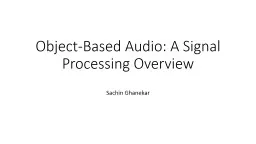PPT-1 Reconstructing head models from photograph for individualized 3D-audio processing
Author : myesha-ticknor | Published Date : 2018-03-21
Matteo Dellepiane Nico Pietroni Nicolas Tsingos Manuel Asselot Roberto Scopigno 2 Overview What is HRTF HRTF from head 3D model Our solution Results and
Presentation Embed Code
Download Presentation
Download Presentation The PPT/PDF document "1 Reconstructing head models from photog..." is the property of its rightful owner. Permission is granted to download and print the materials on this website for personal, non-commercial use only, and to display it on your personal computer provided you do not modify the materials and that you retain all copyright notices contained in the materials. By downloading content from our website, you accept the terms of this agreement.
1 Reconstructing head models from photograph for individualized 3D-audio processing: Transcript
Download Rules Of Document
"1 Reconstructing head models from photograph for individualized 3D-audio processing"The content belongs to its owner. You may download and print it for personal use, without modification, and keep all copyright notices. By downloading, you agree to these terms.
Related Documents

